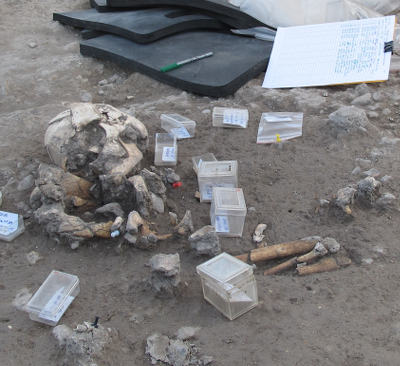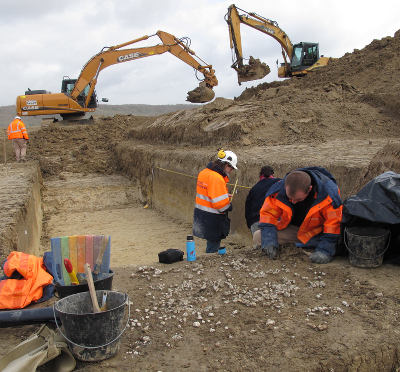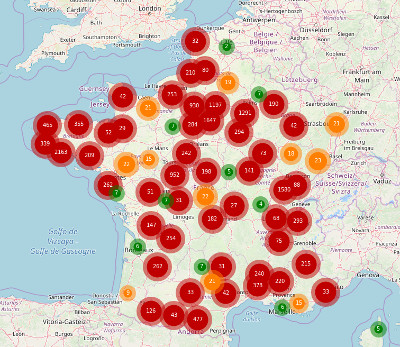Presentation

Ishtar is an ambitious project aiming to enable the management, improvement, analysis and sharing of data from archaeological excavations, from fieldwork to museums.
This project takes shape as a free software for archaeological data management published under AGPL 3.0 or any later version license.
Ishtar is in constant development. It is a participatory project, so do not hesitate to share your needs with the team on the forum!
The software has been designed by and for archaeologists and those who work in connection with them (specialists, managers of archaeological collections, restorers, archaeology enthusiasts, etc.). Its design was nourished by collecting the needs from the field (two of the three members of the core team are archaeologists, and the project benefits from the feedback of many concerned professionals).
The software does not dictate a unique way of doing things, but adapts to all purposes, as well during an excavation as in a research or restoration laboratory, in archaeological warehouses or in museums, notably thanks to typologies specific to each instance and the ability to customize forms and fields. As far as possible, the software does not impose any particular workflow.
The software is organized around a common core associated with modules linked to specific professional needs: administration of operations and inventories, archaeological warehouses, treatments related to restoration laboratories, advanced stratigraphic analysis, QR-code labeling, etc. Thus only the required functionalities are present in the user interface, depending on the chosen modules.
Multiple levels of users are possible, from a public access (or not) to access for researchers, operations managers, warehouses managers, GIS connection, etc., with precise reading and writing rights, defined by geographical area or at the scale of the archaeological excavation, or by module.
The project resulted in the release of version 1 at the beginning of 2017 (fully fonctional version, with management of administrative files, excavations, sites, context records, archaeological finds, finds treatments, archaeological warehouses).
Version 2 was developed in 2018, with the re-engineering of the source code in order to use newer libraries, and the re-design of the graphical user interface to made it responsive.
Version 3 was initiated in 2019, with the migration to Python 3 (major evolution of this programming language), another re-engineering to use newer libraries and numerous new functionalities, such as the cartographic module, the configuration of real-time statistics, the generation of diagram of stratigraphic relations, ...
Version 4 came in 2024, with numerous new functionalities.
Here are some examples (non-exhaustive list) of possible uses for the management of archaeological data coming from:
- a research or preventive excavation (one instance for an excavation or series of excavations) managed at the scale of the research team: data management, data pooling, automatic production of compliant inventories, inventories export and import with specialists, stratigraphic relationships management, etc.;
- a volunteer association: recording the results of each member in a common database;
- at the scale of a regional department of archeology: management of archaeological finds inventories, operations, planning files, reports, warehouses, production of administrative documents and letters, regional knowledge database, etc.;
- a restoration laboratory: close management of treatments and maximum traceability (the history of all treatments is stored);
- students: free standardized database; possibility to share their work with classmates or tutor/supervisor;
- etc.
Functionalities

The current version allows to perform the following tasks:
- excavation data entry
- context records entry
- archaeological finds data entry
- association with documentation
- media management (storage and management of pictures, PDF (reports and articles), etc.)
- automatic generation of inventories compliant with applicable standards for context records, finds, documents
- configurable imports from CSV format (zip for pictures)
- various search facilities, full-text or by parameters, with results display in tables, image galleries and configurable statistics
- exports (CSV) of search results
- automatic generation of documents from ODT templates (OpenDocument format readable with Libre/Open Office and Word)
- customization of forms (add custom fields, select Ishtar fields display)
Administrative module
- administrative files data entry
- management of administrative acts (mails, decrees, etc.)
- automatic generation of administrative mails from templates (acknowledgement of receipt, etc.)
Warehouses module
- management of finds movements
- automatic generation of documents from templates (loan agreements, report sheets, etc.)
- packaging
- management of containers and labelling (ODT templates)
Conservatory module
- add specific fields in the finds form
- treatments management (every single event of the life of a find after its discovery can be documented, may it be a radiography, a restoration, a loan for an exhibition or a study, etc.); a destructive treatment creates a new state of the find
- treatment requests management
- automatic generation of documents from templates (deposit agreements, etc.)
Underwater archaeology module
- add specific fields in the various forms
Cartographic module

- management of various coordinate reference systems (CRS) with EPSG codes
- management of coordinates (finds, context records, sites, excavations, towns) as point or polygon
- cartographic display of search results
- GIS connection (tested with QGIS)
Public portal
- public portal (mini-CMS using an Ishtar API, allowing the display of baskets of finds with the selected fields of their description sheet)